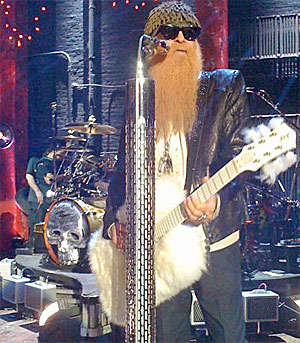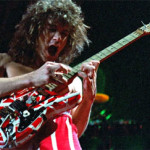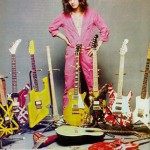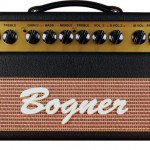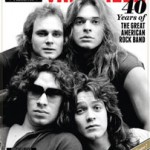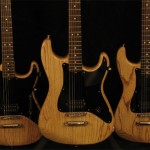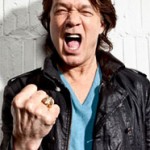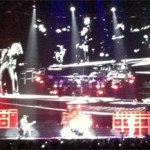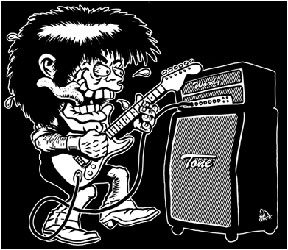ZZ Top Storytellers and the ZT Lunchbox Amp
Plus Short Interview With ZT Lunchbox Inventor
As any ZZ Top fan will know, the band recently had a “Storytellers” special on U.S. cable channel VH1 (a sister channel to MTV). The format of Storytellers is that a band plays a few tunes before a small crowd, and tells stories in the form of answering questions posed by audience members.
ZZ Top is a great band and it’s always worth watching and listening to Billy Gibbons, one of the godfathers of American rock guitar and a certified professor emeritus of woody tone. I wanted to hear his sound in that setting, see what guitars he was using and, of course, watch his deceptively simple technique.
When it comes to his sound and gear, the Rev. Billy F. Gibbons is somewhat…deceptive. An absence of hard info always causes speculation, and Gibbons fans the world over have talked about and typed all sorts of speculation regarding Billy’s guitars and especially his amps. So a notable part of the Storytellers gig was that Billy was using an amp new to him and relatively new to the world: the solid-state, lunchbox-sized ZT Lunchbox.
The Setlist
More on the amp below, but first here’s a rundown of the tunes ZZ Top played and the guitars Billy used. (You can watch the ZZ Top Storytellers show on VH1.com, which breaks the show into seven parts. After the first segment, the next segments are automatically loaded but you have to tolerate a commercial before each segment.)
Just Got Paid – Billy played his Gibson Moderne prototype/fake/replica/whatever it is, the only guitar with non-TV Jones pickups in the set.
La Grange – Red Gretsch Billy-Bo.
 Jesus Just Left Chicago – Billy-Bo-ish custom gold sparkle/pink back guitar. Looked like it might’ve had a maple fingerboard, but hard to tell because it was painted to match the guitar, which Billy has done often.
Jesus Just Left Chicago – Billy-Bo-ish custom gold sparkle/pink back guitar. Looked like it might’ve had a maple fingerboard, but hard to tell because it was painted to match the guitar, which Billy has done often.
Gimme All Your Lovin’ – Same guitar. Was someone playing keys offstage during the chorus?
Tush – Red Gretsch Billy-Bo.
Sharp Dressed Man – Gold sparkle/pink back Billy-Bo-ish guitar.
Legs (available on-line only, not aired on TV) – White furry axe (couldn’t see a brand, but were not the old Deans), synth in the background.
TV Jones Power’Tron Pickups
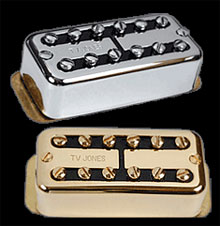
Billy really seems to be digging the TV Jones pickups lately. FYI, the Gretsch Billy-Bo has a TV Jones Power’Tron Plus pickup in the bridge, and a regular TV Jones Power’Tron in the neck. Here’s what TV Jones says about these pickups:
“Power’Tron—the ultimate marriage of twang, fatness, sparkle and warmth. The Power’Tron was born out of our desire to create a Filter’Tron-sized pickup with a strong midrange presence and high output, while still retaining the famous sparkle and bass-note clarity of our TV Classic.
“At the heart of the Power’Tron bridge model are two extra-tall bobbins, allowing for more winds of standard-gauge wire. Single treble notes are reproduced with a full, midrange fatness, while bass notes twang out deep and clear. Overall, the tone is remarkably close to a fifties PAF humbucker, blended with a zing and twang that is all Gretsch. [As far as I am aware, Gretsch does not own TV Jones but Gretsch pickups did inspire TV Jones pickups.]
“Our matched Power’Tron neck model uses standard bobbins (to retain a 5/8” cover height), overwound with standard-gauge wire. The resulting tone is slighty darker and hotter than a TV Classic neck, scooping on an extra helping of thick, buttery goodness.
“The Power’Tron neck model uses standard .380″ pole-to-pole spacing, while the Power’Tron bridge features a pole-to-pole spacing of .406″ for optimum string separation and output. The Power’Tron Plus bridge model is our hottest/heaviest pickup.”
The ZT Lunchbox
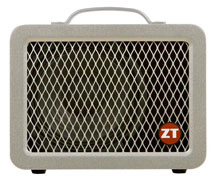 To my ears, Billy’s sound at the Storytellers show was good and raw (no processing!) – much more raw-sounding than his typical (supposedly!) Marshall JMP-1 preamp-Marshall Valvestate power amp live rig. So a cool overall tone.
To my ears, Billy’s sound at the Storytellers show was good and raw (no processing!) – much more raw-sounding than his typical (supposedly!) Marshall JMP-1 preamp-Marshall Valvestate power amp live rig. So a cool overall tone.
But also to my ears, it was missing some sustain and feedback. Was that the ZT Lunchbox amp – the size, the fact that it’s solid-state, the single 6 1/2-inch speaker – or because the band needed low stage volumes for that gig? That and more is addressed in the short interview below with Ken Kantor, founder and president of ZT Amplifiers.
WoodyTone: Billy’s tone on that gig was great, but it seemed like sustain and feedback – the good kind – were lacking. Was that a consequence of the way the sound was handled for that gig and taping, or is the Lunchbox lacking in these areas for some reason? I also watched a few YouTube videos on the Lunchbox, but didn’t hear anyone hitting power chords or getting feedback.
Ken Kantor: Most of the TV soundstage situations I’ve played in or observed keep the actual room volume pretty low. The off-stage people are constantly talking over headsets: Directors are telling camera people what to do, producers are barking orders about what feed to send out, etc., so things are not anywhere near the SPL of a club or concert, or even most bedroom practice. This works against sustain and feedback. In my playing experience, as well as my technical understanding, the Lunchbox can be played for sustain and/or feedback if desired.
The Lunchbox is 200 watts – does it have the headroom of a high-watt tube amp?
One of the main design goals of the Lunchbox power supply was lots of “sag” and headroom. Of course, every amp is different, and even the high-watt tube amps vary in their headroom characteristics. So I’m not sure how to make a comparison that is 100% other than to say that we were aware of the the issue and tried to do it right.
When playing the amp loud and distorted, does it clean up just using the guitar’s volume control?
Yes. The distortion is not “modeled.” It is totally about progressive non-linearity from the drive level. Thus backing off the guitar’s volume will reduce the amount of distortion, unless you are way, way into overdrive territory.
I saw this in the explanatory text about the amp: “very low latency circuit for player responsiveness.” What does it mean?
All amps that use digital processing have a short delay between when the guitar signal is applied, and when the sound comes out of the speaker. This is due to the analog-to-digital-to-analog conversion, and due to the processing going on. This delay is called “latency” and is in the range of milliseconds.
It is our belief that even fairly small delays that are not heard directly by the brain still serve to subtly disconnect the player’s fingers from the sound. Maybe this is one reason why digital modeling amps sometimes just don’t feel right, even if they nail the “tone” of the classics. So we worked to make the processing delay as short as possible, to try and give the Lunchbox the same feel as a traditional [tube-powered] design.
And what does this mean: “vintage-style tone stack response.”
The effects of [the Lunchbox’s] tone control, the tone-shaping it provides, are based on the response of a vintage tone stack. This is easier said than done, as modern circuits don’t usually emulate this particularly well.
Notable
> For more on the Lunchbox, click here. If you do a little reading on the ZT amplifiers website, you will be impressed by Ken’s credentials as well as the thinking and specs that went into the design of the Lunchbox.
> Ken says Billy was digging the sound of the Storytellers session and is buying more amps! The ZT website also says this about the Rev: “After becoming aware of the Lunchbox amp, he met with ZT founder and designer Ken Kantor and soon amassed the largest collection of Lunchbox amps we’re aware of.”
> Did I mention that the ZT retails for just $289.00? (I saw one go for not much les than that on eBay.) And that it has an external speaker jack and a headphone jack with its own volume?
> The ZT Club 12 (12-inch speaker) is coming soon. In addition to a bigger speaker vs. the Lunchbox, the Club 12 will have separate treble and bass controls (the Lunchbox has just one tone control), an effects loop and will use a bigger transformer. On whether it will sound much different than the Lunchbox, Ken said: “Well, it’s a family thing, but it’s a 12-inch vs. a 6.5-inch [speaker] – so sure, it will be different, but with some family resemblance.” No hard info on pricing, just that it will be “well under” $500 and available this fall.
Category: Billy Gibbons, Gibson, Gretsch, TV Jones, ZT Amplifiers

